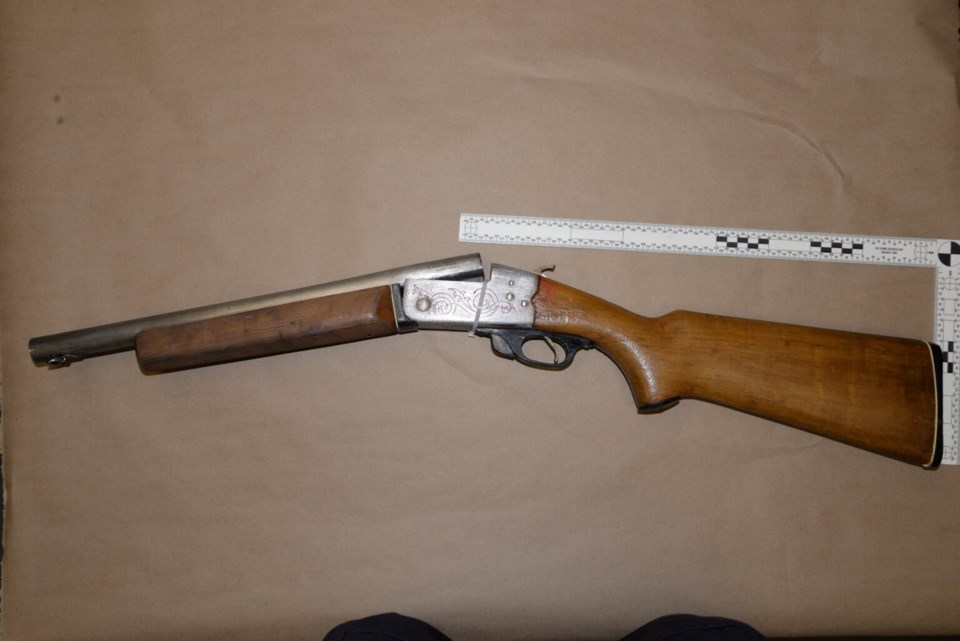The city’s chief of police is calling for more resources to address mental health and addictions issues in Sault Ste. Marie after seeing an “alarming rate of firearms” on the streets within the past year.
A recent use of force report by Sault Ste. Marie Police Service shows there were 57 reported incidents of a subject reportedly possessing a firearm in 2022.
That’s a 96.5 per cent increase over the previous year, where 29 such incidents were recorded by the police service. Incidents where ‘edged weapons’ — sharp, handheld weapons used to inflict physical damage — were used saw a nearly 41 per cent increase in the past year, according to the same report.
Sault Ste. Marie Police Service Chief Hugh Stevenson told reporters following the monthly Police Services Board meeting Thursday that the drug trade is responsible for the surge in incidents where officers encounter a subject packing a firearm or bladed weapon.
“A drug trafficker requires tools to make their world work — they’re called firearms and edged weapons, and much like other trades require specific tools,” said Stevenson. “It is what it is. They need these weapons to do their job, and when there is more drug trade in a community, when there’s people who are being charged with possession for purpose and trafficking, then they use weaponry to protect themselves, and when we get called to these occurrences we’re seeing an exponential increase in the use of weapons on our streets.
“That’s a huge risk to our officers. As you saw, we already lost an OPP officer just recently and several other officers last year through weapons on the street and it’s very concerning, as a chief of police, as to the amount of weaponry on our streets.”
The police chief says the majority of people in the illicit drug trade are associated with one criminal enterprise or another, all of which are connected to organized crime.
“Organized crime sees a market for drug distribution in northern Ontario,” said Stevenson. “We know that the price of drugs in the north are triple or quadruple the prices in the south, and that drives the trade up here.
“There’s demand that we have, and the organized crime groups from the GTA (Greater Toronto Area) try to service that, and the reality is we need to deal with the demand — we need to deal with the people who are in that long-term drug addiction cycle, and we need to get them help, and the longer that we don’t put resources into the front end of the issue, the more violence we’re going to see in our communities.”
Stevenson was reluctant to elaborate on specifics regarding gang activity on the streets.
“No, I don’t want to get into that,” he told reporters when pressed. “I don’t want to get people hurt.”
While Stevenson applauds what’s been done in terms of battling mental health and addiction issues, he feels the community has to continue to advocate for getting help for people.
He added that the largest fentanyl bust in the history of Sault Ste. Marie — netting approximately $470,000 worth of narcotics, including 700 grams of fentanyl back in January as part of Project Otter — speaks to the fact that more needs to be done.
“It means it’s not stopping in terms of demand, and we need to change that cycle and invest in the front end,” he said.
